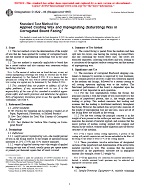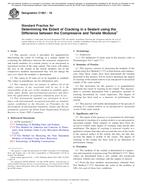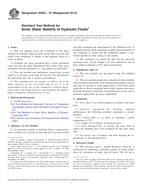1.1 These test methods cover a wet and a dry method for sieve analysis of refractory materials.
1.1.1 Wet Sieve Analysis – Water promotes the slaking of clays and helps to separate fine particles, washing them from the larger grains. This method is recommended for use with materials that require water addition, and that slake in normal industrial use.
1.1.2 Dry Sieve Analysis*#8212;The dry method is not as effective as the wet method in determining the amount of material present in the smaller particle sizes. It is recommended (1) for clays, when the slaking action of water is undesirable, (2) when the material is in the form of coarsely ground grog and calcine, and (3) when the clay is to be used in such a way that the ultimate particle size is of secondary importance.
1.2 These test methods also cover determination of the water content of refractory materials in the wet condition and of air-dried samples as received, so that the sieve analysis can be calculated on the dry basis. Included is a method for obtaining the water content of other refractory materials, such as plastic refractories and wet mixes.
1.3 The values stated in inch-pound units are to be regarded as standard. The values given in parentheses are mathematical conversions to SI units that are provided for information only and are not considered standard.
1.4 This standard does not purport to address all of the safety concerns, if any, associated with its use. It is the responsibility of the user of this standard to establish appropriate safety and health practices and determine the applicability of regulatory limitations prior to use.
Product Details
- Published:
- 12/01/2005
- Number of Pages:
- 4
- File Size:
- 1 file , 74 KB


